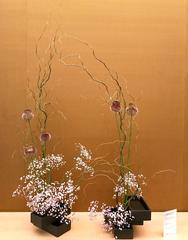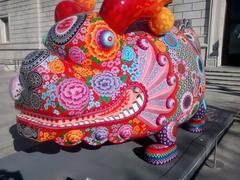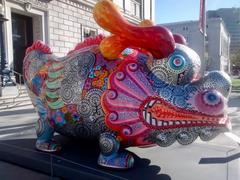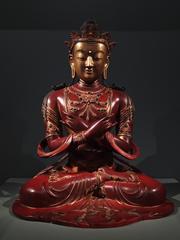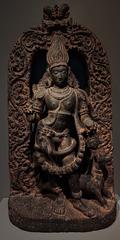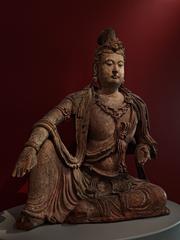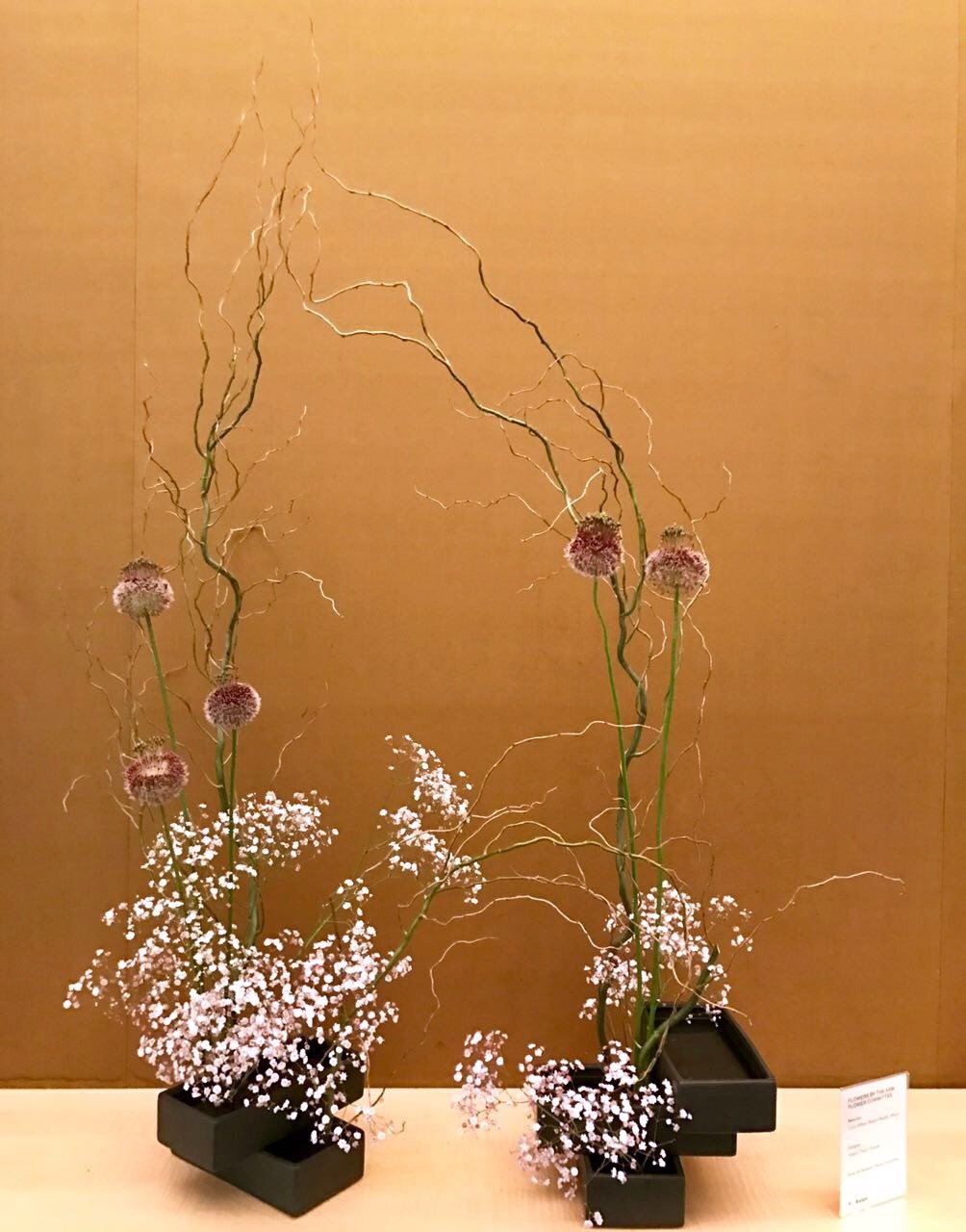
Asian Art Museum of San Francisco: Visiting Hours, Tickets, and Travel Guide
Date: 14/06/2025
Introduction
The Asian Art Museum of San Francisco is a cornerstone of the city’s cultural landscape, dedicated to celebrating, preserving, and sharing the artistic heritage of Asia and Asian American communities. Founded in 1958 and significantly enriched by Avery Brundage’s foundational collection, the museum today houses over 20,000 artworks spanning 6,000 years and numerous Asian regions. Its 2003 relocation to the historic Beaux-Arts Main Library in the Civic Center expanded both its exhibition space and its role as a central hub for art and culture in San Francisco. Visitors can experience ancient artifacts, contemporary art, and immersive installations—including a Japanese tea house—while engaging with dynamic programs that foster cross-cultural understanding and ethical stewardship (Asian Art Museum Mission, Asian Art Museum Visiting Info, Asian Art Museum Provenance).
This comprehensive guide covers the museum’s history, cultural significance, visiting hours, ticketing, accessibility, travel tips, nearby attractions, and its ongoing commitment to ethical collecting and provenance research. Whether you’re planning your first visit or returning for a new exhibition, this article will help you make the most of your experience.
Table of Contents
- Introduction
- History and Development
- Relocation and Expansion
- Collection Highlights and Unique Experiences
- Visiting Hours, Ticketing, and Accessibility
- Visitor Tips and Nearby Attractions
- Leadership and Community Engagement
- Cultural Significance: Local and Global Impact
- Ethical Stewardship and Provenance Research
- Major Repatriation Initiatives
- Community Engagement and Transparency
- Repatriation Challenges and Future Directions
- Frequently Asked Questions (FAQ)
- Conclusion and Visitor Resources
- References
History and Development
Founding and Early Growth
Established in 1958, the Asian Art Museum began as an initiative to honor San Francisco’s deep-rooted ties with Asia and its vibrant Asian and Pacific Islander populations. Avery Brundage’s donation of nearly 8,000 Asian artworks in 1959 laid the foundation for the museum, which first opened as a wing of the M.H. de Young Memorial Museum in 1966 (Wikipedia: Asian Art Museum). Brundage’s ongoing contributions helped the museum grow into one of the most important repositories of Asian art outside of Asia.
Relocation and Expansion
By the 2000s, the museum’s expanding collection required more space. In 2003, the institution moved to the restored Beaux-Arts Main Library in Civic Center, with renovations led by Gae Aulenti. The new Chong-Moon Lee Center for Asian Art & Culture more than doubled the exhibition space, reinforcing the museum’s status in the city’s cultural core.
Collection Highlights and Unique Experiences
Home to over 20,000 objects from across Asia—including China, India, Japan, Korea, Southeast Asia, and the Himalayas—the museum’s collection spans 6,000 years and a broad range of media: ceramics, painting, sculpture, textiles, armor, and religious artifacts.
Notable Experiences:
- Japanese Tea House: An authentic Kyoto-built tea house, reassembled in San Francisco, offers visitors an immersive cultural setting.
- Landmark Exhibitions: From the 1975 Chinese archaeological exhibition to contemporary showcases like “Mountains of the Mind – A Chinese Landscape Journey” (2024–2025), the museum highlights both historical and modern Asian art.
- Rotating Masterpieces: Regularly changing displays include iconic pieces such as the Cosmic Buddha, 10th-century Indian Ganesha, and rare Japanese Noh masks (SFTourismTips).
Visiting Hours, Ticketing, and Accessibility
- Hours: Tuesday–Sunday, 10:00 AM–5:00 PM; Thursdays open until 8:00 PM. Closed Mondays and major holidays (Asian Art Museum Visiting Info).
- General Admission: $15 adults, $10 seniors (65+), students, and youth (13–17). Free for children 12 and under and museum members. Bay Area residents and groups receive discounts.
- Free Days: First Sunday of each month (supported by Kaiser Permanente); special exhibitions may require separate tickets even on free days.
- Accessibility: Fully wheelchair accessible, with elevators, ramps, accessible restrooms, and assistive listening devices. Service animals are welcome.
- Tickets: Purchase online or at the entrance. Advance purchase is recommended, especially for special exhibitions.
Visitor Tips and Nearby Attractions
- Best Times: Weekday mornings and Thursday evenings are less busy.
- Photography: Allowed in most permanent galleries without flash; prohibited in special exhibitions.
- Tours: Free daily guided tours and self-guided multimedia tours via the museum app.
- Amenities: The on-site café offers Asian-inspired cuisine; the gift shop features art-related merchandise and is accessible without paid admission (Asian Art Museum Plan Your Visit).
- Nearby Attractions: Adjacent to Civic Center Plaza, San Francisco City Hall, San Francisco Public Library, and the War Memorial Opera House—a perfect itinerary for a day of cultural exploration.
Leadership and Community Engagement
Since 2008, Dr. Jay Xu has led the museum with a vision to “awaken the past and inspire the next,” championing inclusivity and spotlighting Asian American artists. New spaces like the Akiko Yamazaki and Jerry Yang Pavilion support expanded exhibitions and community events. Educational programs, school partnerships, and digital initiatives reinforce the museum’s mission to engage diverse audiences and foster cross-cultural understanding (Asian Art Museum Press Release).
Cultural Significance: Local and Global Impact
A San Francisco Anchor
The museum’s Civic Center location reflects San Francisco’s historic role as a gateway between Asia and North America. With over one-third of residents identifying as Asian or Pacific Islander, the museum serves both as a cultural repository and a living center for Asian American heritage (Asian Art Museum Our City).
Global Reach
The museum’s collection represents more than 48 countries and is among the world’s most comprehensive. International partnerships bring major exhibitions from Asia to U.S. audiences, and the museum actively shapes the global narrative of Asian art.
Championing Asian American Voices
Recent exhibitions highlight Asian American artists such as Bernice Bing and Chanel Miller, reflecting the museum’s commitment to inclusivity and the evolving landscape of American culture (Asian Art Museum Press Release).
Ethical Stewardship and Provenance Research
Commitment and Standards
AAMSF is a leader in ethical collecting, adhering to guidelines set by the Association of Art Museum Directors (AAMD) and the American Alliance of Museums (AAM). All acquisitions undergo rigorous provenance research to ensure legal export and clear ownership, particularly for antiquities (Asian Art Museum Provenance).
Major Repatriation Initiatives
- Thai Sandstone Lintels: Returned to Thailand in a landmark repatriation finalized in 2025 after they were found to have been illegally exported (CNN Article).
- Khmer Bronze Sculptures: The museum is in the process of returning four ancient bronzes linked to a Thai temple complex, with decisions expected in 2025 (Exhibitions Asian Art Museum: Moving Objects).
- Afghan Marble Tablet: Deaccessioned after provenance showed illegal export during political unrest (Asian Art Museum Provenance).
Addressing Problematic Legacies
The museum has addressed ties to collectors implicated in illicit antiquities trade, such as those cited in the Pandora Papers, by increasing transparency and engaging with source communities (SF Standard Article).
Community Engagement and Transparency
Public programs like “Moving Objects: Learning from Local and Global Communities” invite dialogue about stewardship, heritage, and museum ethics, emphasizing the museum’s role as a cultural bridge (Exhibitions Asian Art Museum: Moving Objects, Denver Post Article).
Challenges and Future Directions
Repatriation processes are complex, involving legal ambiguities, incomplete documentation, and multiple stakeholder claims. The museum continues systematic provenance research and regularly publishes updates online (Asian Art Museum Provenance).
Frequently Asked Questions (FAQ)
Q: What are the Asian Art Museum’s visiting hours?
A: Tuesday–Sunday, 10:00 AM–5:00 PM; Thursdays until 8:00 PM. Closed Mondays and major holidays.
Q: How much are tickets?
A: $15 for adults, $10 for seniors, students, and youth (13–17); free for children 12 and under.
Q: Is the museum accessible?
A: Yes, it is fully wheelchair accessible and offers assistive services.
Q: Are guided tours available?
A: Yes, free daily tours and self-guided multimedia tours are available.
Q: What are some nearby attractions?
A: San Francisco City Hall, Civic Center Plaza, San Francisco Public Library, and the War Memorial Opera House.
Conclusion and Visitor Resources
The Asian Art Museum of San Francisco stands out not only for its world-class collection but also for its ethical leadership, inclusive programming, and dedication to community engagement. Situated in the heart of San Francisco’s Civic Center, it is an essential destination for anyone interested in Asian art, culture, and history.
Plan your visit:
- Check official visiting hours and tickets
- Explore rotating exhibitions and special events
- Download the Audiala app for curated guides and updates
- Follow the museum on social media for the latest news
Whether you are captivated by ancient masterpieces, contemporary installations, or the museum’s pioneering work in provenance and repatriation, your experience at the Asian Art Museum promises to be both enriching and inspiring.
References
- Asian Art Museum Mission
- Asian Art Museum Visiting Info
- Asian Art Museum Provenance
- Asian Art Museum Press Release
- Wikipedia: Asian Art Museum
- CNN Article on Thai Sandstone Lintels
- Exhibitions Asian Art Museum: Moving Objects
- SF Standard Article on Museum Stewardship
- Denver Post Article on Repatriation
- SFTourismTips Guide
